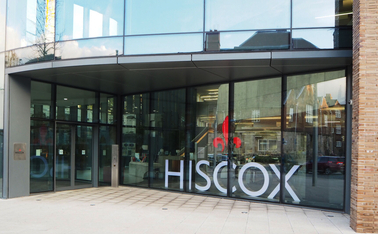
Cyber insurance costs doubled in a year - Howden

Howden’s annual report on cyber has revealed the average cost of cyber insurance has doubled since last year due to an extreme supply-demand imbalance.
The report said higher loss frequency and severity from ransomware had caused the supply-demand imbalance.
The annualised number of global ransomware incidents was up 235% in 2021 compared to 2019 and average US ransom payments rose by 370% over the same timeframe, Howden detailed.
According to the document, A Hard Reset 2.0, cyber has experienced the most extreme rate increases across the entire insurance market with average annualised increases in excess of 120%.
Executive director at Howden, David Rees, commented: “The last year has been characterised by price corrections, contracting capacity and restrictive terms – classic hard market territory. Whilst the value of cyber insurance continues to prevail for the vast majority of buyers, pricing is now approaching the limits of economic viability for some.
“Compounded increases from here are not sustainable, which, assisted by the more favourable claims environment that appears to be manifesting this year, is likely to moderate or even stabilise pricing. Improved insurer performance should also help attract new capacity into the market.”
The conflict in Ukraine has brought uncertain implications, according to Howden, including reduced cyber frequency.
On 25 May, Aon’s Global Markets Insight Report for Q1, said geopolitical events in Eastern Europe had caused cyber insurance prices to harden by over 30% in the UK.
Howden’s global head of cyber, Shay Simkin, said: “The war in Ukraine, is a lot more unpredictable, but it appears the conflict has so far dampened cyber frequency further as both warring sides focus their efforts on conventional warfare. This could of course change in an instant – for example, a ceasefire, a large-scale cyber attack, pressure on Russia’s government to find new revenue streams as economic sanctions bite – but for now insurance claims are down compared to last year. All of which raise important questions around the prioritisation and efficacy of cyber operations during wartime.”
Market Maturity
Howden forecaste that the US would remain the biggest market for cyber insurance with Europe expected to close the gap over the next few years. A predicted compound annual growth rate of 25% would see gross written premiums exceed $25bn (£19.9bn) by 2026.
Simkin commented: “Market conditions remain difficult, but two potential tailwinds may help companies and insurance carriers as this year progresses. The first is off the back of more favourable ransomware trends following underwriting and risk management actions taken in response to increased ransomware frequency and severity. Companies are more resilient to ransomware attacks today than they were this time last year.”
Insurer scrutiny
Howden said insurers were reacting to fast moving risk developments which involved deep scrutiny of client’s cyber controls.
It stated: “There is unlikely to be any let up in insurers’ probing of cyber security any time soon. Preparation and timing are therefore paramount in this market, and companies need to anticipate a prolonged and meticulous placement process.”
For all the latest industry news direct to your inbox, sign up for our daily newsletter.
Only users who have a paid subscription or are part of a corporate subscription are able to print or copy content.
To access these options, along with all other subscription benefits, please contact info@insuranceage.co.uk.
You are currently unable to print this content. Please contact info@insuranceage.co.uk to find out more.
You are currently unable to copy this content. Please contact info@insuranceage.co.uk to find out more.
Copyright Infopro Digital Limited. All rights reserved.
You may share this content using our article tools. Printing this content is for the sole use of the Authorised User (named subscriber), as outlined in our terms and conditions - https://www.infopro-insight.com/terms-conditions/insight-subscriptions/
If you would like to purchase additional rights please email info@insuranceage.co.uk
Copyright Infopro Digital Limited. All rights reserved.
You may share this content using our article tools. Copying this content is for the sole use of the Authorised User (named subscriber), as outlined in our terms and conditions - https://www.infopro-insight.com/terms-conditions/insight-subscriptions/
If you would like to purchase additional rights please email info@insuranceage.co.uk







